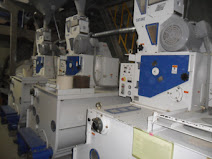1 Introduction to Cauldron Rock.
Uiryeong Jeongam: A mysterious rock that resembles a pot lid and the legend of a rich man
A mysterious rock rises above the blue waves of Namgang River in Uiryeong-gun, Gyeongsangnam-do. It is called Jeongam (鼎巖), or Cauldron Rock, because it resembles a pot lid. This unique rock, firmly established in the gently flowing river, is not just a natural landscape, but also has a long history and interesting legend, captivating visitors.
2 A lid floating on the Namgang River, the unique appearance of Jeongam
At the Namgang River, which flows powerfully toward the southern coast, and passes through Uiryeong-gun, Jeongam, which stands tall in the middle of the river, has a strange shape that resembles the top of a cauldron, just like its name.
The sedimentary rock, which has been eroded and polished by the river over a long period of time, fully reveals the mystery of nature. What is particularly noticeable are the three foot-shaped shapes hidden under the water.
This creates the imagination that it is as if a giant cauldron is immersing its legs in the river, and adds to Jeongam’s unique charm.
3 The mysterious energy that calls for wealth, the legend of Jeongam
There is an interesting legend handed down about Jeongam since ancient times. It is said that a great rich man is born within an 8km radius of the cauldron rock.
This legend seems to have been created by stimulating people’s imagination by combining the unique shape of Jeongam and the rich natural environment of the surrounding area. Even if it is just a story that has been handed down, the hearts of those who look at Jeongam and pray for wealth are no different now than they were in the past.
4 A place where you can feel the breath of history, Jeongamjin
Jeongam is not just a strange rock, but also a place with historical significance. The rock is located at Jeongamjin (鼎巖津), or ferry site, where General Gwak Jae-u defeated the Japanese during the Imjin War. If you walk along Jeongamgyo, an iron bridge that crosses the Namgang River from the sidewalk below the gate, you will not find any traces of the fierce battle at the time, but you can feel the bravery of our ancestors who tried to protect the country while looking at the leisurely flowing river.
5 Beautiful night view and nearby attractions
The route to Jeongam is not difficult. It is located about 10 minutes by car from Gunbuk IC on the Namhae Expressway, so it is easily accessible. If you climb the iron and sleeper stairs next to the gate, you can view Jeongamjin, which commemorates General Gwak Jae-u's exploits. In addition, beautiful lighting facilities are installed at Uiryeong Gate, so you can enjoy an even more splendid and magnificent night view at night. Jeongam, where you can reflect on its historical significance during the day and enjoy its beautiful night view at night, will provide an unforgettable experience for those visiting Uiryeong.
How to get to Sungnimsa Temple.
- Address: 15-2 Namgang-ro 8-gil, Uiryeong-eup, Uiryeong-gun, Gyeongsangnam-do
- Management: Uiryeong-gun Urban Regeneration and Urban Planning
- Contact: 055-570-3504
- Park Type: Cultural Park
- Park Area: 86,660m3
- Designation Announcement Date: 2005-07-12
- Management Agency Name: Uiryeong-gun Office, Gyeongsangnam-do
The scenery of Sungnimsa Temple.
Map
--- ---






.jpg)










































